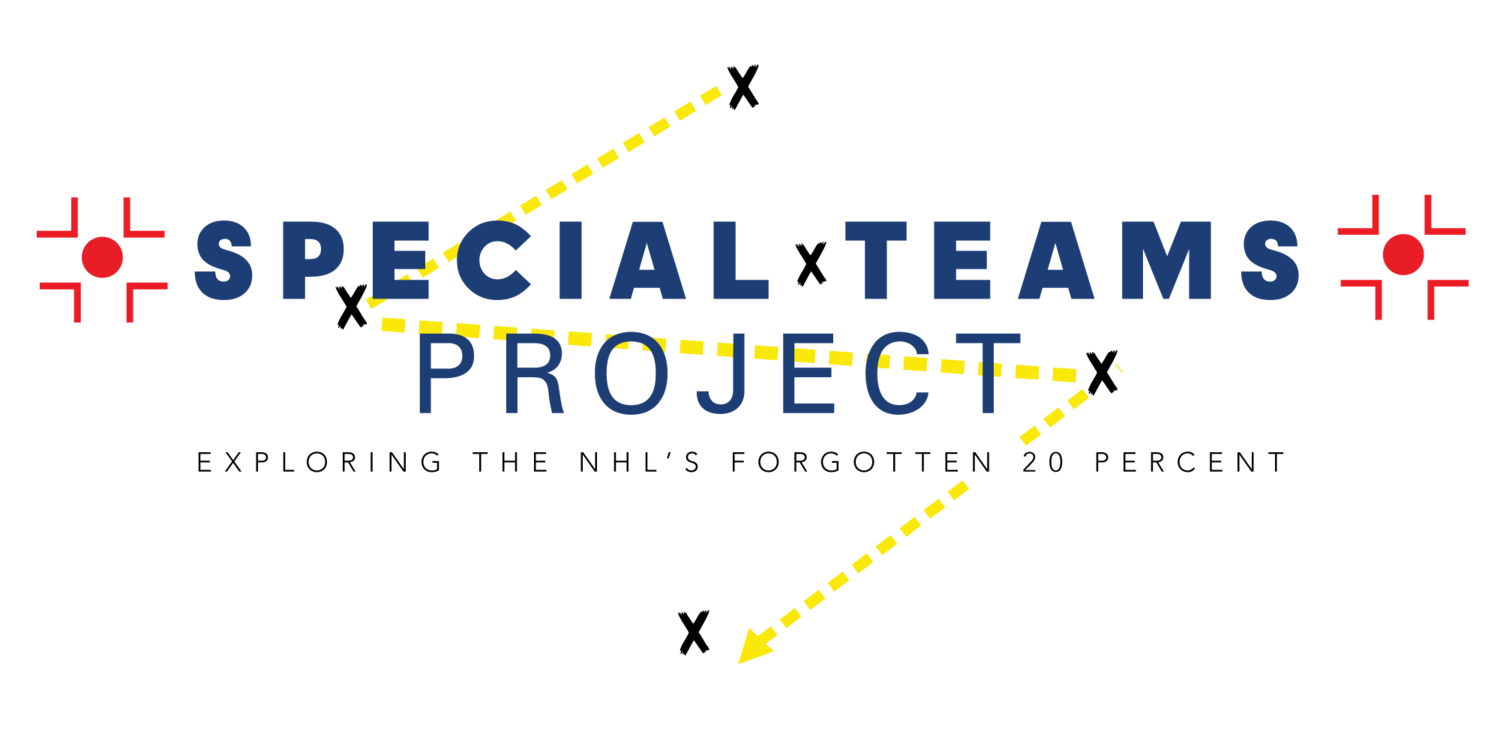Special Teams Spotlight - Drop Pass Loop Entry
One of the topics I will cover later on is the power play entry drop pass, an interesting strategy in that it is exclusively used on the power play. You don’t see teams dropping the puck in the neutral zone at even-strength, largely because with aggressive forechecks it could potentially lead to disaster. I know there are people out there who have strong opinions about the drop pass in this context, and the sample size of my data isn’t big enough yet to give a conclusive result regarding its effectiveness (stay tuned), but I like the play in theory because it accomplishes one of the big goals of a breakout, which is to approach the line with speed — the receiver of a success drop pass has gained speed leading up to his reception of the puck — while freezing the defenders, who have been approaching the entry as though they need to close down and gain an angle on F1, only to see the puck dropped back and the dynamic change completely.Most drop pass plays can be categorized as either what I call a “Drop Pass Individual,” in which the player who accepts the drop pass carries directly into the zone, a “Drop Pass Wide,” in which said player dishes the puck to a player hugging the boards on either side, seeing how the defenders are likely now flat-footed near the center of the ice, or a “Drop Pass D-to-D,” in which the pass receiver has another skater alongside him, also gaining speed, who accepts a second pass and hits the line opposite where the defenders have now adjusted towards.
The New York Islanders, however, created an added wrinkle that I find intriguing. The following video is composed of a few entries the team has attempted using a play I call a “Drop Pass Loop,” which combines some of these principles. Some of the entries in the video weren’t executed particularly well, but there have been others instances in which the passing and movement has been more crisp, and you can imagine what the play looks like at its cleanest.
Essentially F1, usually Kyle Okposo, approaches the blueline from the right. He fakes a dump-in, which causes the penalty killers, especially those on the opposite side, to turn and chase. At the last second, F2, who is positioned at the right blue line, skates back towards center ice with speed, picks up the puck and circles back towards the middle. He then hits D1, who approaches from the left with speed, and usually has room to skate the puck in with ease, as defenders were either frozen in place or significantly past the blue line to recover the expected dump-in. I diagrammed the play for easier comprehension.
I find it interesting that the Canadiens seemed to adopt the play, or at least something very similar, on one occasion this year. I’m curious to see what Doug Weight comes up with next, and whether the Islanders can clean up this play so that it works at maximum effectiveness.
